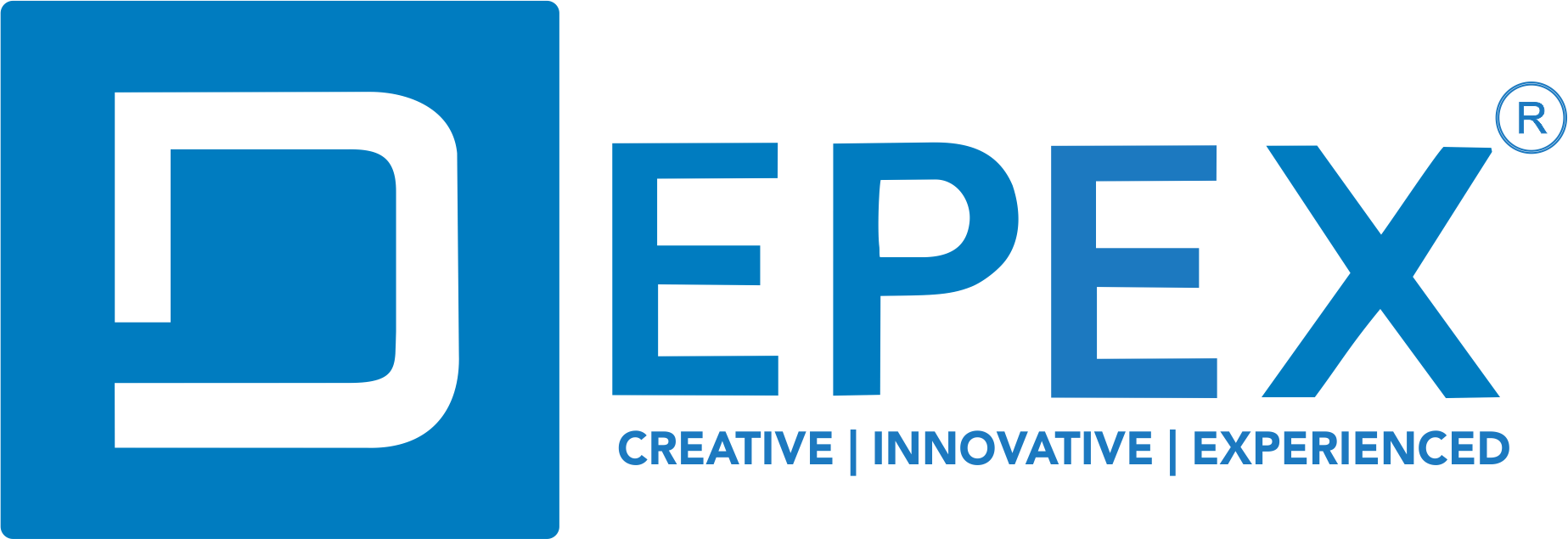AI-Powered HOA Management Software: Features & Development Tips
Homeowner associations are under pressure to do more with less. Boards must manage dues, enforce covenants, schedule maintenance, resolve vendor issues, and keep residents informed—all while proving transparency and reducing costs. That’s why many boards are exploring HOA Management Software with built-in AI. In this guide, we’ll show how AI elevates a modern platform from a basic portal into a proactive operations engine. You’ll learn the must-have features, practical HOA Management Software Development tips, integration and security considerations, and a phased rollout plan you can actually execute.
We’ll write this for an AI-First Search world: concise headings, clear intent, scannable structure, and rich, explanatory paragraphs you can share with your board or development team.
Why AI belongs in HOA Management Software
Traditional portals collect forms, show balances, and send emails. They don’t predict risk, automate repetitive work, or summarize messy conversations. AI-Powered HOA Management Software changes that by:
- Turning raw data (invoices, emails, photos, sensor feeds) into actions.
- Predicting late-payment risk, vendor delays, or amenity bottlenecks.
- Drafting notices, summaries, and meeting minutes in seconds.
- Answering resident questions with an on-site, policy-aware chatbot.
With AI in the loop, managers spend less time in spreadsheets and more time improving community experience.
Core features of an AI-enabled HOA platform
Below are the pillars you should prioritize while planning HOA Management Software Development. We’ll minimize bullet lists and explain how each feature earns its place.
1) Smart assessments and dues management
Start with the cash engine. Residents need frictionless billing; boards need predictable cash flow. AI helps by forecasting delinquency risk, nudging at-risk homeowners with empathetic, personalized reminders, and recommending payment plans when appropriate. Auto-reconciliation links bank feeds with your ledger and flags anomalies—duplicate charges, misapplied payments, or suspicious reversals—before month-end. In practice, you’ll connect payment gateways and accounting, then add an AI layer to score late-risk and trigger the right outreach workflow.
2) Violation tracking with computer vision assistance
Covenant enforcement tends to consume time and goodwill. Use a mobile app for quick, geotagged captures and a web console that groups repeated violations by location and rule. A lightweight computer-vision model can suggest categories (e.g., “trash bin visible,” “vehicle parked on lawn,” “fence height”) and auto-generate drafts of notices with the correct bylaw references. Managers approve and send; the system tracks appeal windows and resolutions. Over time, your model learns seasonal patterns and recommends preventive communication before a spike.
3) Maintenance, work orders, and predictive scheduling
Work orders should feel like ride-hailing: clear categories, SLAs, photos/videos, and status updates. AI adds triage and routing: it reads the description, recognizes urgency, and assigns the right vendor based on availability, performance rating, and past cost. If you adopt IoT sensors (water leak, pump vibration, power), predictive models can forecast failures and schedule preventive servicing during low-impact windows. The result is fewer emergencies, lower spend, and happier residents because problems are fixed before they become complaints.
4) Vendor management and contract intelligence
Store COIs, W-9s, service agreements, rate cards, and SLAs in a central repository. An OCR + contract intelligence layer extracts renewal dates, notice periods, and auto-escalation clauses. The system can alert managers 60/30/7 days before key dates and suggest renegotiation benchmarks based on historic spend and seasonal volume. After jobs close, residents rate service quality; AI summarizes feedback to guide future dispatching and contract renewals.
5) Accounting, budgets, and anomaly detection
You don’t need to reinvent accounting, but you do need automation and safeguards. Integrate with QuickBooks or a similar GL, then add anomaly detection to catch outlier transactions: sudden cost spikes, duplicate vendor invoices, or unusual reimbursement patterns. For budgeting, AI produces rolling forecasts based on historical outlays, reserve study targets, and scheduled projects. It can also simulate “what-ifs” (e.g., insurance increases, utility hikes, or vendor rate changes) to help the board set assessments with data, not guesswork.
6) Document hub, e-sign, and governance workflows
Every HOA lives on documents—CC&Rs, architectural guidelines, minutes, financials, reserve studies, and notices. A well-designed document hub supports version control, permissions, and e-sign. Add a retrieval-augmented generation (RAG) layer: residents can ask, “What’s the setback requirement for corner lots?” and get a citation-backed answer from current governing docs. During meeting prep, AI summarizes change logs and drafts agenda packets; after meetings, it converts the recording into minutes with action items, owners, and due dates.
7) Resident engagement: omnichannel and multilingual
Residents expect fast, friendly answers—without waiting on office hours. Offer web chat, email, SMS, and WhatsApp. The AI concierge responds instantly to routine questions (balance, amenity hours, gate PIN reset), escalates complex requests to humans, and translates messages both ways. A multilingual interface and knowledge base are table stakes in diverse communities. All interactions sync to the resident profile so managers see the full story at a glance.
8) Amenities, bookings, and dynamic policies
Pools, clubhouses, and courts drive community satisfaction—and conflict. A smart booking system enforces rules (guest limits, deposit requirements, blackout dates) and prevents double-booking. AI can suggest off-peak slots and detect policy abuse (e.g., repeat no-shows). For special events, it auto-generates checklists, signage templates, and post-event surveys. Over time, you’ll learn which amenities need expansion and which policies need refinement.
9) Architectural requests and digital plan review
ARC submissions are historically slow: missing forms, incomplete drawings, back-and-forth emails. Modern HOA software lets owners upload plans, photos, and materials in a guided form. AI checks completeness, highlights missing items (e.g., neighbor consent), and tags likely rules. Reviewers annotate directly on images, request changes, and track a clear SLA. The platform produces approval letters and maintains a searchable archive for future reference.
10) Communications and notice automation
Replace manual mail merges with AI-authored drafts tuned to your tone and bylaws. Pick a scenario—annual meeting notice, irrigation repair, parking reminder—and the system generates a resident-friendly message with dates, locations, and rule citations. Managers edit and send by channel, while the platform tracks delivery and read receipts. For sensitive notices, require e-sign acknowledgments; for mass updates, add a quick survey to measure sentiment.
Architecture for scalable HOA Management Software
Even small associations create large, noisy datasets. Choose an architecture that scales, isolates communities, and keeps PII safe.
Multi-tenant SaaS with strong isolation. Each association (and sub-association) lives in a logically isolated tenant with separate encryption keys. Use row-level security at the database layer and scoped service tokens for APIs.
Event-driven core. Changes—payment received, work order created, vendor assigned, policy updated—emit events to a message bus. Background workers handle billing, notifications, AI inference, and file processing asynchronously, keeping the UI fast.
Data storage strategy.
- OLTP database (PostgreSQL/MySQL) for transactions.
- Object storage (S3/GCS) for photos, videos, and PDFs.
- Search index (OpenSearch/Elastic) for docs and tickets.
- Vector database for RAG (pgvector, Pinecone, Weaviate).
AI layer.
- Small, task-specific models (classification, routing, anomaly detection) for speed and cost.
- LLMs for summarization, drafting, and Q&A—wrapped with RAG so answers stay grounded in your latest documents.
- A prompt orchestration service with safety guardrails and confidential compute or key-scoped encryption for sensitive data.
Integration hub.
- Payments: Stripe, Authorize.net, or your processor.
- Accounting: QuickBooks Online, Xero, or NetSuite (for master associations).
- Email/SMS/WhatsApp: SendGrid, Twilio.
- E-sign: DocuSign, Adobe Sign.
- Maps and geocoding: Google Maps, Mapbox.
- Identity: SSO/OIDC for managers; passwordless magic links for residents.
Observability.
Log everything with PII redaction. Use distributed tracing for slow endpoints, metrics for worker queues, and dashboards for SLA health (ticket age, first response time, completion rates).
Security, privacy, and compliance from day one
HOAs process payments, IDs, lease docs, and sometimes access credentials. Security can’t be bolted on later.
- Encryption: TLS 1.2+ in transit; per-tenant keys at rest.
- Access controls: Role-based access with granular scopes (board vs. manager vs. vendor vs. resident).
- Audit trails: Immutable logs for all admin actions; exportable for audits.
- Document governance: Retention rules, legal holds, and purging policies.
- PII hygiene: Auto-redact sensitive fields in logs and error traces.
- Model safety: Never pass raw PII to external models; use field-level masks and opt-in data sharing.
- Compliance posture: SOC 2 controls, PCI considerations for payments, and alignment with regional privacy laws (GDPR/CCPA) as required.
Measuring value: KPIs your board will care about
Before you write a line of code, define the scoreboard. A credible HOA Management Software program proves its ROI visibly.
- Collections efficiency: % collected by due date; average days outstanding.
- Ticket SLAs: Time to first response; time to close; backlog trend.
- Vendor performance: On-time completion rate; rework rate; cost variance vs. estimate.
- Amenity utilization: Bookings per amenity hour; no-show rate.
- Resident satisfaction: CSAT/NPS from post-interaction micro-surveys.
- Policy adherence: Violations per 100 homes, repeat-offender rate.
- Automation lift: % of messages, minutes, or notices drafted by AI and approved.
Set baselines, then re-measure at 30/60/90 days to show real operational improvement.

A practical 90-day build plan
You want quick wins without corner-cutting. Here’s a phased plan Depex uses to reduce risk while proving value fast.
Days 0–15: Discovery & blueprint
Interview board members, managers, and a few residents. Map processes for collections, work orders, ARC, communications, and amenities. Capture edge cases (gates, elevators, pools with seasonal staffing). Define data flows, roles, and SLAs. Prioritize features by ROI and feasibility.
Days 16–45: Foundation & pilot features
Stand up multi-tenant auth, core data models (units, owners, balances, tickets), and payment integration. Ship the resident portal and manager console with tickets, payments, and announcements. Add AI “assist” for drafting notices and summarizing conversations—always with human-in-the-loop review.
Days 46–75: AI depth & operations
Introduce delinquency risk scoring, vendor routing, and basic anomaly detection for invoices. Add RAG search over governing docs, so the chatbot answers policy questions with citations. Layer in e-sign and an agenda-to-minutes workflow for board meetings.
Days 76–90: Rollout & governance
Harden security, complete audit logging, and run load tests. Train staff, migrate live data, and run the first billing cycle under supervision. Measure KPIs again. Ship a roadmap for the next quarter (predictive maintenance and expanded amenities).
Build vs. buy vs. extend: decision framework
- Buy off-the-shelf if you need standard workflows tomorrow and can live with configuration limits. Ensure APIs exist for deeper AI add-ons.
- Extend an existing platform if you have a stable vendor plus gaps you can fill with an integration hub and AI microservices.
- Build custom if you manage a master association, have unique bylaws and amenities, or require strict data residency and specialized automations.
Depex often recommends a hybrid: launch with a reliable core (payments, accounting) and layer custom AI modules that deliver your unique advantages.
Cost control for AI features
AI can be both cheap and expensive—depending on how you design it.
- Right-size models. Use smaller models for classification/routing; reserve large models for complex drafting and summarization with strict max-tokens.
- Cache aggressively. Don’t re-answer the same policy question 500 times. Cache cited responses per document version.
- Batch jobs. Summarize tickets nightly. Generate meeting minutes post-meeting, not in real time.
- Human-in-the-loop. Keep humans approving outbound communications to reduce escalations and re-sends.
- Cost dashboards. Attribute spend by tenant and feature. If violation-vision costs spike, tune thresholds or sampling.
UX patterns that reduce friction
- One-tap actions: “Pay now,” “Approve ARC,” “Submit photo” should be a single step.
- Context everywhere: Show balance, open tickets, and upcoming events on the resident home screen.
- Clear SLAs: Each ticket displays owner, priority, target date, and last update.
- Plain-language AI: When the assistant answers, include links to the source doc and a “Was this helpful?” micro-survey.
- Accessibility: High-contrast themes, screen reader labels, and keyboard navigation earn trust and widen adoption.
Data migration without the headaches
Most HOAs are coming from spreadsheets, emails, and shared drives. Define migration lanes:
- Directory: Units, owners, tenants, vehicles, pets.
- Financials: Balances, payment history, and open invoices.
- Governance: CC&Rs, policies, ARC history, and vendor contracts.
- Tickets: Open work orders and violation records.
Write idempotent importers and run a rehearsal on a staging tenant. Validate totals, random-sample records, and hold a sign-off meeting before cutover. After go-live, keep a read-only link to the legacy store for 60–90 days.
Real-world AI use cases, end-to-end
Board meeting in a box. Upload the agenda as a doc, record the meeting, and let the system produce minutes, decisions, and action items with owners and dates. It then drafts resident-facing highlights and schedules follow-ups.
ARC calmness. A homeowner submits a patio cover request. The assistant checks completeness, attaches the right guideline clauses, and creates an ARC dashboard card. Reviewers annotate, request a revised drawing, and approve with conditions. The approval letter is generated and archived.
Friendly collections. A resident is trending late. The model suggests a warm reminder with a link to a one-time partial payment plan. The resident pays, the plan schedules future installments, and the risk score drops all with clear, humane communication.
Technology stack suggestions (proven and pragmatic)
- Frontend: React/Next.js, TypeScript, Server Components for speed; mobile app with React Native if you need native camera/GPS.
- Backend: Node.js (NestJS) or .NET for enterprise rigor; Laravel if your team prefers PHP and rapid iteration.
- Database: PostgreSQL with row-level security and pgvector for embeddings.
- Search: OpenSearch/Elastic for tickets and documents.
- Queues: RabbitMQ or Kafka for event processing.
- AI services: Mix local and hosted models; wrap everything behind your inference gateway with prompt templates, safety filters, and caching.
- Infra: Kubernetes for multi-tenant scaling, IaC with Terraform, and GitHub Actions for CI/CD.
- Security: Vault for secrets, OIDC for SSO, and centralized audit logging.
Depex adapts this stack to your constraints budget, compliance, and in-house skills while keeping the door open for future AI enhancements.
Common pitfalls (and how to avoid them)
- Unbounded scope: Resist “all features now.” Ship collections + tickets + announcements first, then layer AI.
- AI without governance: Ground LLM answers in your latest documents; show citations; require manager approval for sensitive messages.
- Weak tenancy: Never mix data across associations; enforce tenant boundaries at every layer.
- Opaque costs: Track AI usage by tenant and feature; set guardrails on token counts and attachment sizes.
- Training gaps: Provide short, role-based tutorials and in-app walkthroughs so managers adopt the new workflows quickly.
SEO and AI-First Search guidelines for this page
Because you’ll attract both human and AI readers, structure matters.
- Clear H1 and descriptive H2s/H3s (you’re reading them now).
- Short paragraphs with connective phrases so summaries stay accurate.
- FAQ section for long-tail questions that AI agents often surface.
- Schema markup (FAQPage, SoftwareApplication, Organization) to help answer engines extract facts.
- Descriptive alt text on screenshots when you add them later.
- Internal links to your pricing, security, and implementation pages.
FAQ: Quick answers boards and managers search for
Is AI safe to use with resident data?
Yes—if you isolate tenants, encrypt data, redact PII before inference, and keep sensitive prompts within your own infrastructure. Always log access and provide opt-outs for training.
Will AI replace managers or the board?
No. It removes drudgery—drafting notices, summarizing meetings, routing tickets—so humans can focus on decisions and community care.
How do we start small?
Launch with payments, tickets, and announcements. Add AI for message drafting and doc Q&A. Roll out predictive features after your data quality improves.
What if our HOA has unique bylaws?
That’s where RAG shines. Load your current documents; the assistant answers with citations from those documents, preserving your unique rules.
Can we integrate our existing accounting?
Yes. Connect QuickBooks or your GL, then add anomaly detection and forecasting on top. Keep the accounting system of record; use the platform as an intelligent layer.
Conclusion: Build an HOA platform that pays for itself
Great HOA Management Software should feel invisible. Residents get fast answers. Vendors arrive on time. Board members see finances and risks at a glance. With AI-powered features smart collections, predictive maintenance, policy-aware chat, and contract intelligence you can reduce operating costs and raise satisfaction in the same quarter.

If you’re ready to define your roadmap, select the right stack, and ship a secure AI-Powered HOA Management Software pilot in 90 days, Depex Technologies can help. Our team blends product strategy, engineering, and applied AI to deliver outcomes you can measure—fewer escalations, faster cycles, and happier communities.
Let’s build your HOA platform the right way. Contact Depex Technologies to discuss your HOA Management Software Development today.






